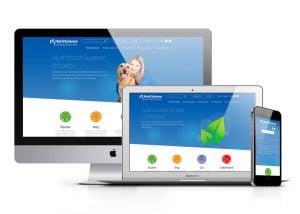Your website design can go a long way to determining the success or failure of your business. Nowadays, it is essential for every business to set up an online platform, and an attractive website will help to determine this success.
Staying on top of your design and constantly optimising your site will help to create a positive reaction to your website. Many businesses with poor web design are turning away customers from the start as 42% of consumers will not buy from a poorly designed website. A well-designed website helps to intrigue consumers and encourage them to conduct their business with your brand.
Creating the perfect website for your business takes time and research and requires constant attention. To help your website get a headstart we have come up with 5 do’s and don’ts of web design for your business:
Do’s
1. Ensure a Mobile-Friendly Design
A key aspect of website design is to make sure that your website is compatible with mobile devices. With 52.2% of all website traffic generated through mobile, it is fair to say that optimising this area of your website is crucial to the success of your site.
Mobile-friendly websites are also essential for increasing conversion rates from potential leads. With 61% of consumers outlining they would only buy from mobile-friendly websites, it is important to address this aspect of your website.
2. Include Call to Actions
To make sure that your website visitors take action, it is important that you encourage them to do so. The best way to encourage your consumer is to place calls to action (CTA’s) on each page of your website.
Placing CTA’s on every page is increasing the likelihood of a consumer actually following through with a query or completing the desired action on your website. This way your website is encouraging a visitor to become a client/consumer. A call to action can vary depending on the website, however, the most common examples would be hyperlinked text or a button.
3. Create Easy use Navigation
Having a good navigation system for your website is critical to the site’s usability. Having good site navigation makes it easy for your consumers to find what they are looking for.
Making the journey for the consumer easier is a great method of increasing conversion rates. Consumers are then more likely to return to a website that they found easy to use. 94% of consumers find navigation as the most useful tool for a website.
4. Emphasize Quality Content
While your website design is critical to its success, so is the content that you publish. Taking care and caution with the content is essential to maintaining consumer interest.
A very well-designed website will be nothing unless the content provided with it matches expectations. Creating interesting and relevant content for your target audience will help to lengthen the average session time on your website and encourage the consumer to return for more.
5. Create a Colour and Font Scheme
Having too many colours or fonts on your website is more than likely going to confuse the consumer and overwhelm them to the point where they leave your website. Both colours and fonts have meanings behind them and matching the right ones to your brand will help to create the perfect website for your business.
The colours and fonts can also be used to highlight key sections on your website that you want to draw the consumer’s attention towards. Ultimately, the colours and fonts used should visually reflect your business to the consumer and give them a pleasurable viewing experience.
Don’ts
1. Have Slow Load Times
The load times on a website are a critical aspect of the overall consumer experience. As the internet is becoming more and more enhanced and accessible to the worldwide community, consumers are expecting to have access to content straight away and are not going to wait around for a website to load.
A 2-second delay in load time is likely to increase the website abandonment rate by 87%. With the consumer holding all the power, measuring your website’s overall performance and optimising its pages can help to reduce load times to keep them satisfied.
2. Use Pop-up Ads too early
Many websites tend to have pop-ups appear as soon as a user opens up a page on the site. This is one of the most annoying things from a consumer’s perspective and is likely to encourage them to leave the page.
While some pop-up ads do help to increase the engagement rate on a website, they are likely to reduce the likelihood of the consumer returning to the website.
3. Autoplay Music or Video Content
Having music or video content playing, not at the consumer’s request is likely to annoy them and encourage them to leave your website. The website user wants to have control over what they want to see or hear. Therefore, giving them the power to choose this themselves is key to a website’s success.
While visual and audible content is usually beneficial for a business to enhance customer experience and improve conversions, autoplaying without the website user’s consent is not going to have a positive impact on its success.
4. Use Poor Imagery
The images and photography that are used on your site can go a long way to determining its status and overall quality. Using quality, bespoke imagery that fits in with your brand outlines to the user that your brand is aware of its place which increases the trust between the two. Having good visual content on your site also impacts the user experience which has a major bearing on overall website success.
Using poor imagery doesn’t add any value for the consumer and decreases the level of satisfaction experienced when visiting a site. While sourcing quality imagery for your website can be expensive, there are many websites with free quality stock photos to choose from, for your business.
5. Overwhelm the Reader with Text
Having too much text on your webpage is likely to overwhelm your user and discourage them from using your website. While Google and other search engines love the extra amounts of text for SEO purposes, it is hard for the user to digest and find what he or she is looking for.
Increased amounts of text dilutes key search areas for the user and makes it difficult for them to complete their desired action on the page, which is therefore reducing the website’s conversion rate.
We hope that you have enjoyed our article and gained some insight into some of the essential do’s and don’ts of website design.
Now that you’ve read our website design considerations, why not read some more of our other articles, or view our client portfolio here.
Do you need help with your website? Contact us today to get your project started.






